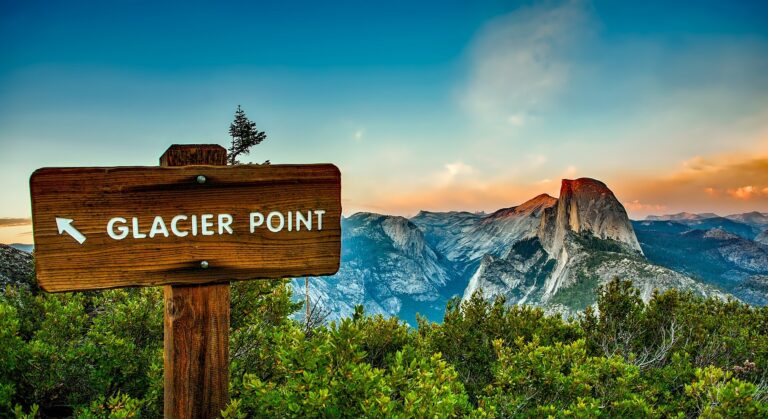Project Description
The Sierra Nevada in California is a mountain range that extends for almost 600 km latitudinally (36-40°N), parallel to, and at a distance of about 250 km from, the Pacific coast. It is characterised by a considerable precipitation gradient from the wet west flank (up to 1500 mm/y) to the dry east flank (as low as 150 mm/y), and by a latitudinally-controlled temperature gradient (of a few degrees Celsius) from south to north (e.g. Moore and Moring, 2011). With peaks exceeding 4000 m asl, the Sierra Nevada currently hosts many niche glaciers which survive only due to valley-specific microclimate conditions. During the last glacial maximum (LGM) about 20,000 years ago, the Sierra Nevada was largely covered by ice, with valley glacier tongues extending many kilometres from the main divide. The last retreat of these glaciers deposited large terminal moraines, some of which have been geochronologically constrained using an innovative radiometric technique called cosmogenic nuclide exposure dating (e.g. Rood et al., 2011). The LGM climate of the Sierra Nevada was affected by the large Laurentide ice sheet to its north which pushed the Pacific jet stream south of its current position. However, while the palaeo-glacier and palaeo-climate record is relatively well known for the LGM, far less is understood on the changes that followed during the deglaciation. A scattered and incomplete glacial record tells a story of an initial very rapid deglaciation, punctuated by a hiatus in retreat registered as stillstands or even minor readvances (the Younger Dryas for example) (e.g. Phillips, 2017), possibly in phase with other Northern Hemisphere glacial histories observed for example during the decay of the Fennoscandia and British ice sheets. Several questions of the Sierra Nevada deglaciation remain unanswered and require attention. At what rate did the ice retreat? How many readvances and/or stillstands occurred? Did initial retreat from LGM occur synchronously? Were these changes linked to large-scale (ie global) climatic trends or more regional/localised (ie micro) conditions? What climate forcing(s) affected the deglaciation history? Was the deglaciation history of the Sierra Nevada in line with that of other North American and possibly European mountains? What lessons can be learned that are applicable to future climate trends, and their effect on glaciers, across the world?
To answer some of these compelling questions, this PhD project aims to identify, sample and date Lateglacial moraines and erratics in many sites across the Sierra Nevada to provide a geographically comprehensive chronology of palaeoglacier dynamics. Glacier geometries will be reconstructed using physically-robust, 3D models. These will be used to calculate the palaeo-glacier equilibrium line altitudes which, in turn, will be combined with other, independent palaeo-climate proxies to provide a complete reconstruction of the climate (temperature and precipitation) during the deglaciation. The PhD project will particularly focus on the palaeo-glacial and palaeo-climate conditions of what are locally known as the Tioga 4 (15.75 ± 0.5 ka) and Recess Peak (13.25 ± 0.25 ka) phases, and the time interval between them.
CANDIDATE BACKGROUND
We are looking for an enthusiastic individual with an interest in at least one of the following: glacial geomorphology and modelling, climatology, geochronology. Fieldwork, remote sensing and GIS experience are particularly welcome, but not essential.
Photo credit: Unsplash.com
Supervisors
Matteo SpagnoloPrimary Supervisor: | Profile: Matteo Spagnolo Email: m.spagnolo@abdn.ac.uk Institution: University of Aberdeen Department/School: School of Geosciences |
Donal MullanSecondary Supervisor: | Profile: Donal Mullan Email: D.Mullan@qub.ac.uk Institution: Queen's University, Belfast Department/School: School of Natural and Built Environment |
Brice ReaAdditional Supervisor: | Profile: Brice Rea Email: b.rea@abdn.ac.uk Institution: University of Aberdeen Department/School: School of Geosciences |
Additional Supervisor: | Greg Stock (CASE partner supervisor), Yosemite National Park David Fink (CASE partner supervisor), Australian Nuclear Science & Technology Organisation (ANSTO) |
References
Phillips, F. 2017. Glacial chronology of the Sierra Nevada, California, from the Last Glacial Maximum to the Holocene. Geogr. Res. Lett, 43, 527-552
Moore, J.G., Moring, B.C. 2013. Rangewide glaciation in the Sierra Nevada, California. Geosphere, 9 (6), 1804–1818
Rood, D.H., Burbank, D.W., Finkel, R.C., 2011. Chronology of glaciations in the Sierra Nevada, California, from 10Be surface exposure dating. Quat. Sci. Rev. 30, 646-661
QUADRAT Themes
- earth-systems
Partners
CASE partnership – Yosemite National Park
CASE partnership – Australian Nuclear Science & Technology Organisation (ANSTO)
A CASE Partnership project is delivered in collaboration with an industry partner. The CASE partner organisation contributes finance, expertise, facilities and an internship.






















































